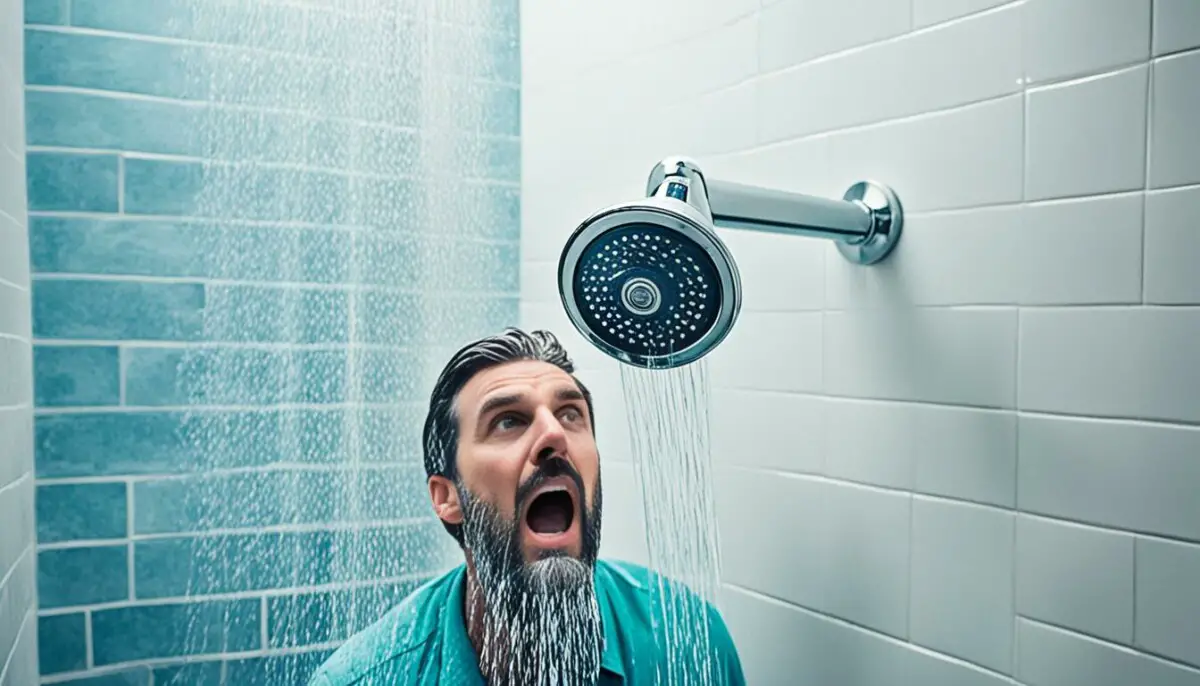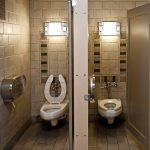Last Updated on 3 months by Francis
Have you ever wondered why there is no shut-off valve for the shower in your bathroom? It may seem like an oversight, but there are actual reasons behind this design choice. In this article, we will explore why showers typically do not have separate shut-off valves, the implications, and alternatives for turning off the water supply.
Contents
Key Takeaways:
- Shut-off valves for showers are usually omitted to avoid plumbing complications and reduce construction costs.
- The main shut-off valve for the entire house is commonly used to turn off the water supply to the shower when needed.
- The absence of a separate shut-off valve in the shower is due to the complex plumbing structure and the lower necessity compared to sinks and toilets.
- If you need to turn off the water supply to the shower, locate and use the main shut-off valve for your house.
- Installing a separate shut-off valve for the shower can provide convenience for repairs and maintenance, but it is not always necessary.
Why Is There No Shut off Valve for Shower in Bathrooms?

Have you ever wondered why showers in bathrooms don’t have shut-off valves? It’s a common question that many homeowners and bathroom users have pondered. The absence of these valves can be attributed to several factors, including cost-cutting measures, limited installation space, and the plumbing structure of showers compared to sinks and toilets.
When builders construct bathrooms, they often opt to exclude shut-off valves for showers as a cost-cutting measure. Including an additional valve adds to the overall expenses of the plumbing system. Since showers tend to require fewer maintenance interventions and repairs compared to sinks and toilets, builders prioritize reducing costs by omitting separate shut-off valves for showers.
In addition to cost considerations, the limited space available in bathrooms also plays a role in the absence of shut-off valves for showers. Showers are typically designed to maximize space efficiency, with builders utilizing every available square inch. Installing a shut-off valve would require extra planning, construction, and potentially compromise the overall design and functionality of the shower area.
Furthermore, the plumbing structure of showers differs from that of sinks and toilets, influencing the necessity for shut-off valves. Showers usually have a single water supply line, which is regulated by the shower valve or faucet. Unlike sinks and toilets that may have multiple water supply lines for hot and cold water, showers have a straightforward water flow system that makes shut-off valves less crucial.
Builders often exclude shut-off valves for showers as a cost-cutting measure and due to limited installation space. Showers have a simpler plumbing structure compared to sinks and toilets, making separate shut-off valves less necessary.
It’s important to note that while there isn’t a separate shut-off valve for showers, the main shut-off valve for the entire house can still be used to shut off the water supply to the shower when necessary. This main shut-off valve, typically located near the water meter or where water enters the house, controls the water supply for all fixtures and appliances in the house, including showers.
Overall, the absence of shut-off valves for showers in bathrooms is a result of cost considerations, limited installation space, and the simplicity of the shower’s plumbing structure. While having a shut-off valve for the shower can provide convenience for repairs and maintenance, it’s not always necessary. Factors such as cost, accessibility, and compliance with local building codes should be taken into account when considering whether to install a shut-off valve for the shower.
Importance of Shut off Valve in Showers
Although shut-off valves aren’t typically included in showers, their presence can offer several benefits. Having a shut-off valve allows for easier repairs and maintenance without shutting off the water supply to the entire house. It can save time, effort, and potential water damage by isolating the shower system for specific maintenance tasks.
For example, if there is a leak or a broken component in the shower, having a shut-off valve allows you to turn off the water supply to the shower without affecting the water supply to other parts of the house. This can be particularly useful when dealing with emergency situations or when repairs need to be carried out quickly.
Additionally, a shut-off valve in the shower provides the flexibility to control water flow and pressure, enabling users to conserve water or use it more efficiently. It allows for easy adjustments and can contribute to water conservation efforts without compromising the overall functionality and convenience of the shower.
Installing a shut-off valve in the shower should be done by a professional plumber, considering any legal requirements and the potential impact on the aesthetics of the bathroom. While it may not be necessary for everyone, individuals who value convenience, maintenance ease, and water efficiency may find it beneficial to have a shut-off valve installed in their showers.
Do Showers Usually Have Shut off Valves?
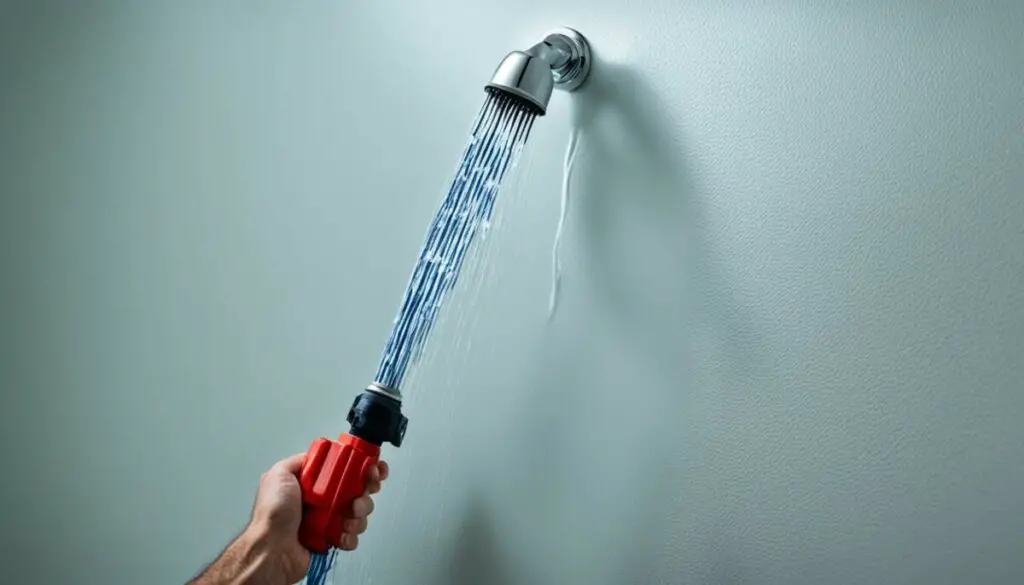
When it comes to showers, the presence of a separate shut-off valve can vary depending on the bathroom setup. However, in most cases, showers do not come equipped with their own shut-off valves. Instead, the main shut-off valve for the entire house is typically used to control the water supply to the shower.
This design choice is influenced by various factors, including plumbing considerations and cost-saving measures by builders. By relying on the main shut-off valve, homeowners can easily turn off the water flow to the shower when needed, without the need for additional valves in the bathroom.
While not having a dedicated shut-off valve for the shower may seem unconventional, it is a common practice in residential construction. Builders prioritize efficiency and cost-effectiveness by simplifying the plumbing layout, particularly for showers where the need for individual shut-off valves is typically lower compared to sinks or toilets.
By utilizing the main shut-off valve for the entire house, homeowners can conveniently shut off the water supply to the shower for repairs, maintenance, or in case of emergencies. However, it’s important to note that the specific configuration of plumbing systems can vary, so it’s always best to consult with a professional for guidance on the shut-off valve location and usage in your particular home.
Where Is the Shut off Valve for the Shower?

If a shut-off valve is installed for the shower, it can be found in various locations depending on the plumbing setup and accessibility. The most common location is behind the wall connected to the shower, which allows for easy access and maintenance.
In some cases, the shut-off valve may be located within an access panel, providing a dedicated area for shutting off the water supply specifically to the shower. This makes it convenient for repairs or replacements without affecting the entire plumbing system.
Another possible location for the shut-off valve is underneath the shower. However, this arrangement may require extra steps, such as removing the access panel or lifting the floor, to reach the valve.
Additionally, the shut-off valve for the shower can be integrated into a manifold system for water distribution. This setup enables precise control over each individual fixture in the bathroom, including the shower.
While the exact location of the shut-off valve for the shower may vary, it is essential to familiarize yourself with the specific plumbing configuration in your bathroom. This knowledge can help you quickly locate and operate the shut-off valve when needed, ensuring easy control over the water supply to the shower.
Turning off the Water If There’s No Shut off Valve
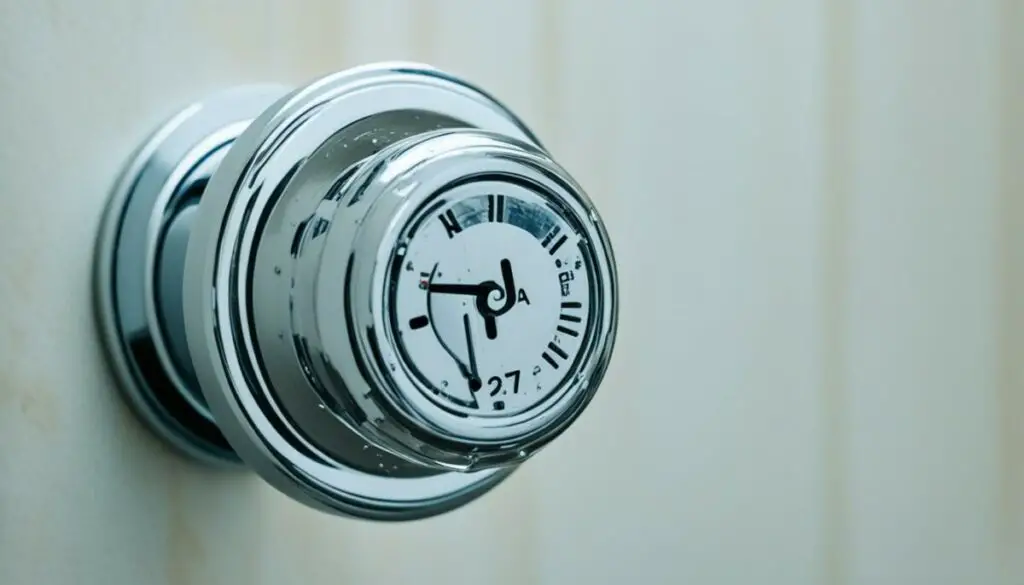
If there is no separate shut-off valve for the shower, you can still turn off the water supply by utilizing the main shut-off valve for the entire house. While the location of the main shut-off valve may vary depending on the type of residence, it is typically found near the water meter or where the water enters the house.
Turning off the water using the main shut-off valve is a straightforward process:
- Locate the main shut-off valve. It is usually positioned near the water meter or at the point where the water line enters your house.
- Turn the valve clockwise to shut off the water supply. It may require a wrench or a special shut-off key, depending on the design of the valve.
- Verify that the water to the shower is shut off by trying to turn on the shower faucet or by checking the flow of water in the showerhead.
By using the main shut-off valve for the entire house, you can effectively control the water flow to the shower, even without a separate shut-off valve. Remember to locate and familiarize yourself with the main shut-off valve in your home so you can quickly respond to any plumbing emergencies or maintenance needs.
Important Note:
It’s essential to regularly test the functionality of the main shut-off valve to make sure it is in proper working order. If you encounter any difficulties or suspect a problem with the valve, it is recommended to consult a professional plumber for assistance.
Shutting off the Water to Shower in a House
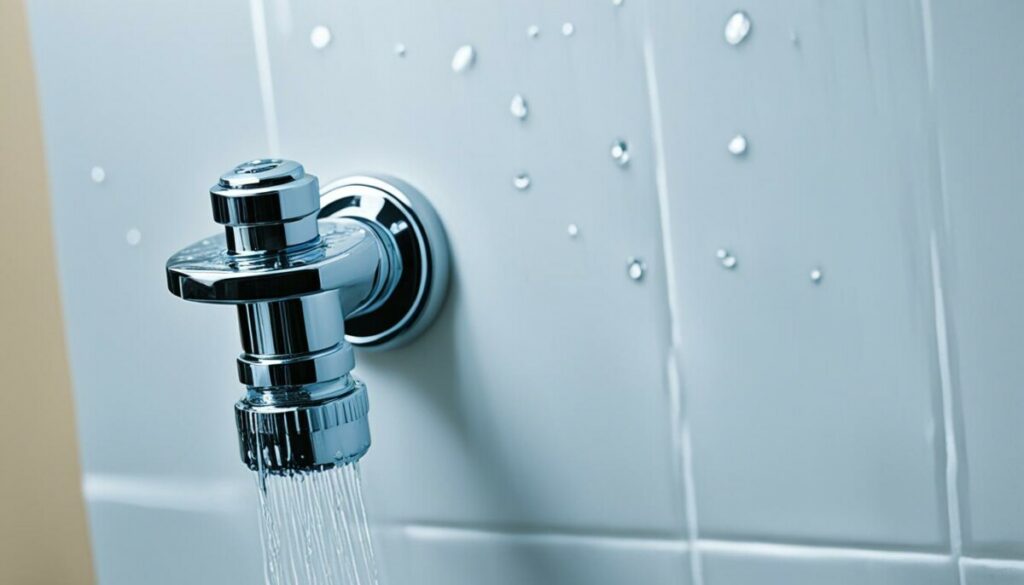
In a house, the main shut-off valve is usually located outside the house, near the water meter. In some cases, it may be inside the house, such as in a utility closet or basement. To turn off the water, the valve can be rotated clockwise or may require the use of a screwdriver.
If you’re unsure of the exact location of the shut-off valve for your house, here are a few common areas to check:
- Outside near the water meter
- In the utility closet or basement
- Under the kitchen sink
If you can’t find the shut-off valve, it’s important to consult a professional plumber to locate and identify the valves in your house.
Once you’ve located the shut-off valve, follow these steps to shut off the water to your shower:
- Turn off any appliances or fixtures that use water in your house.
- Locate the shut-off valve.
- If the valve has a lever, rotate it clockwise to shut off the water flow.
- If the valve requires a screwdriver, insert the screwdriver into the valve and turn it clockwise to shut off the water.
It’s important to note that shutting off the main water supply to your house will affect all the water fixtures in your house, not just the shower. If you only need to shut off the water to the shower, consider installing a separate shut-off valve specifically for the shower.
Did You Know?
Installing a shut-off valve for the shower can provide convenience during repairs or maintenance. It allows you to shut off the water flow to the shower without disrupting the water supply to the rest of the house.
Having a separate shut-off valve for the shower offers several advantages:
| Advantages of Installing a Shut-Off Valve for the Shower |
|---|
| 1. Ability to shut off water supply to the shower without affecting other fixtures in the house. |
| 2. Easier repairs and maintenance for the shower system. |
| 3. Reduces the risk of water damage in case of a leak or malfunction. |
| 4. Allows for individual control of water flow to the shower. |
Before installing a separate shut-off valve, it’s recommended to consult a professional plumber to ensure compliance with local building codes and to determine the most suitable location for the valve.
Shutting off the Water to Shower in an Apartment
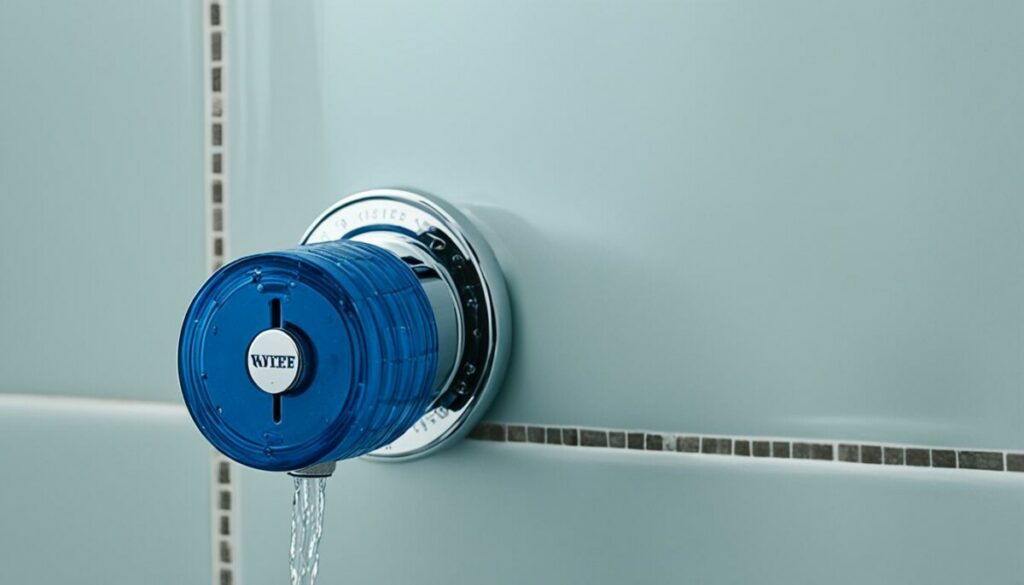
In an apartment, the water shut-off valve is often located under the bathroom or near the kitchen sink. This location ensures convenient access for residents to control the water supply to their shower. To turn off the water to the shower, simply locate the main shut-off valve and rotate it clockwise.
Apartment buildings typically have centralized plumbing systems, making it easier to identify the shut-off valve. In most cases, the shut-off valve for the entire unit is located near the bathroom or kitchen area. It may be concealed behind an access panel or within a utility closet.
As apartments are designed with space optimization in mind, the shut-off valve may be situated in a more accessible position compared to other types of residences. Its proximity to the bathroom or kitchen sink ensures quick and easy control over the water supply, including the shower.
Example:
“If you are unsure about the shut-off valve’s location in your apartment, reach out to your building maintenance personnel or property management. They can provide guidance and assistance in locating and operating the shut-off valve for your shower.”
Advantages of Shut-off Valve for Shower in an Apartment
| Advantages | Description |
|---|---|
| Convenience | Easy access to shut-off valve near the bathroom or kitchen sink |
| Quick Water Control | Ability to turn off the water to the shower in case of emergencies or repairs |
| Cost-Effective Maintenance | Efficient water management for maintenance and repairs, reducing potential water damage and associated costs |
Shutting off Water to Shower in a Mobile Home
When it comes to shutting off the water to the shower in a mobile home, the process may differ from traditional houses. In most cases, the shut-off valve for the shower can be found underneath the structure. However, accessing this valve may require some additional steps.
To locate the shut-off valve, you may need to remove the siding outside the mobile home and use a flashlight to find the valve along the water line. It’s essential to take caution during this process to avoid any potential damage. Once you’ve located the shut-off valve, you can turn it clockwise to shut off the water supply to the shower.
Here’s a step-by-step guide to help you shut off the water to the shower in a mobile home:
- Locate the shut-off valve, which is typically positioned underneath the mobile home.
- Remove the siding outside the mobile home, if necessary, to access the valve.
- Use a flashlight to locate the shut-off valve along the water line.
- Turn the shut-off valve clockwise to shut off the water supply to the shower.
Keep in mind that shutting off the water to the shower in a mobile home may require some effort, but it’s an essential step for various maintenance and repair tasks. By shutting off the water when needed, you can prevent potential water damage and ensure a safe and convenient working environment.
Tips:
Make sure to handle the shut-off valve with care when removing the siding. Avoid applying excessive force to prevent any unintentional damage.
By following the recommended steps and taking necessary precautions, you can successfully shut off the water to the shower in your mobile home.
Installing Shut off Valve for Shower – Do You Need To?
While it is not mandatory to install a separate shut-off valve for the shower, it can be beneficial for easier repairs and maintenance. Having a shut-off valve allows you to shut off the water supply to the shower without disrupting the water flow to other fixtures in the bathroom. This can save you time, effort, and potentially avoid water damage in case of leaks or repairs.
However, the decision to install a shut-off valve should be made after considering various factors. Firstly, it is important to ensure that the installation is conducted by a professional plumber. They will have the necessary expertise and tools to install the valve correctly, minimizing the risk of leaks or other plumbing issues.
“Installing a shut-off valve for your shower provides convenience and peace of mind.”
Additionally, it is essential to comply with any local building codes or regulations when installing a shut-off valve. Some areas may have specific requirements or guidelines regarding the installation of plumbing fixtures, including shut-off valves. By adhering to these regulations, you can ensure the safety and legality of your bathroom modifications.
Moreover, it is essential to consider the impact on the aesthetics of your bathroom. Installing a shut-off valve for the shower may involve cutting into the wall or making other modifications that could affect the visual appeal of the space. If aesthetics are a top priority for you, it is worth discussing alternative solutions or concealed shut-off valves with your plumber.
To summarize, while not obligatory, installing a shut-off valve for your shower provides convenience and peace of mind. It allows for easier repairs and maintenance, reducing the risk of water damage and inconvenience. However, it is crucial to consult with a professional plumber, comply with local building codes, and consider the impact on the bathroom’s visual appeal before proceeding with the installation.
What Is a Shower Rough in Valve?
A shower rough-in valve is an essential component for every shower. It connects to the hot and cold water lines in your home and controls the temperature and flow of water for your shower. This valve is typically installed during the initial construction or renovation process and is hidden behind the shower wall. Its purpose is to ensure proper water flow and pressure, allowing you to enjoy a comfortable and refreshing shower experience.
The shower rough-in valve typically has four ports: two for the hot and cold water inlets and two for the showerhead and tub spout outlets. This configuration allows for easy installation and connection of the necessary plumbing fixtures.
By using a shower rough-in valve, you can customize your shower system and achieve your desired water temperature and pressure. It provides the foundation for a well-functioning and efficient shower, ensuring that water flows smoothly and without interruption.
Whether you’re building a new home, renovating your bathroom, or upgrading your shower, understanding the importance of a shower rough-in valve is crucial. It sets the groundwork for a reliable and enjoyable shower experience for years to come.
Conclusion
While showers typically do not have separate shut-off valves, the main shut-off valve for the house can be used to turn off the water supply. However, installing a shut-off valve specifically for the shower can offer additional convenience for repairs and maintenance. It allows you to isolate the shower without affecting the water supply to the rest of the house.
Although not a requirement, having a shut-off valve for the shower can save you time and hassle in situations where you need to perform maintenance or address plumbing issues. With a dedicated shut-off valve, you can easily stop the water flow to the shower, minimizing potential water damage and reducing the need to shut off the entire house’s water supply.
When deciding whether to install a shut-off valve for the shower, it’s important to consider factors such as cost, accessibility, and compliance with local building codes. Additionally, consulting with a professional plumber can help you make an informed decision based on your specific circumstances and needs.
FAQ
Why is there no shut off valve for shower in bathrooms?
The absence of shut-off valves for the shower system in bathrooms can be attributed to cost-cutting measures by builders and limited space for installation. The complexity of the plumbing structure and the lower necessity for shut-off valves in showers compared to sinks and toilets also contribute to the lack of separate shut-off valves in showers.
Do showers usually have shut off valves?
While individual bathrooms may vary, most showers do not come with a separate shut-off valve. The main shut-off valve for the entire house is typically used to shut off the water supply to the shower when necessary.
Where is the shut off valve for the shower?
If a shut-off valve is installed for the shower, it is usually located behind the wall connected to the shower or accessible through an access panel. Other possible locations include underneath the shower or within a manifold system for water distribution.
How can I turn off the water if there’s no shut off valve?
If there is no separate shut-off valve for the shower, the main shut-off valve for the entire house should be used to turn off the water supply to the shower. The location of the main shut-off valve may vary depending on the type of residence, but it is typically near the water meter or where the water enters the house.
How do I shut off the water to the shower in a house?
In a house, the main shut-off valve is usually located outside the house, near the water meter. In some cases, it may be inside the house, such as in a utility closet or basement. To turn off the water, the valve can be rotated clockwise or may require the use of a screwdriver.
How do I shut off the water to the shower in an apartment?
In an apartment, the water shut-off valve is often located under the bathroom or near the kitchen sink. Turning off the water supply to the shower can be done by rotating the main shut-off valve clockwise.
How do I shut off the water to the shower in a mobile home?
In a mobile home, the shut-off valve for the shower may be located underneath the structure. Accessing the shut-off valve may require removing the siding outside the mobile home and using a flashlight to locate the valve along the water line.
Do I need to install a shut off valve for the shower?
While it is not mandatory to install a separate shut-off valve for the shower, it can be beneficial for easier repairs and maintenance. However, the installation should be done by a professional, considering any legal requirements and the potential impact on the aesthetics of the bathroom.
What is a shower rough-in valve?
A shower rough-in valve is a necessary component for every shower. It connects to the hot and cold water lines in the home and regulates the temperature and flow of water for the shower. It typically has 4 ports for the hot and cold water inlets and the showerhead and tub spout outlets.
Conclusion
While showers may not have separate shut-off valves, the main shut-off valve for the house can be used to turn off the water supply to the shower. Installing a separate shut-off valve can provide convenience for repairs and maintenance, but it is not always necessary. Factors such as the cost, accessibility, and compliance with local building codes should be considered when deciding whether to install a shut-off valve for the shower.

